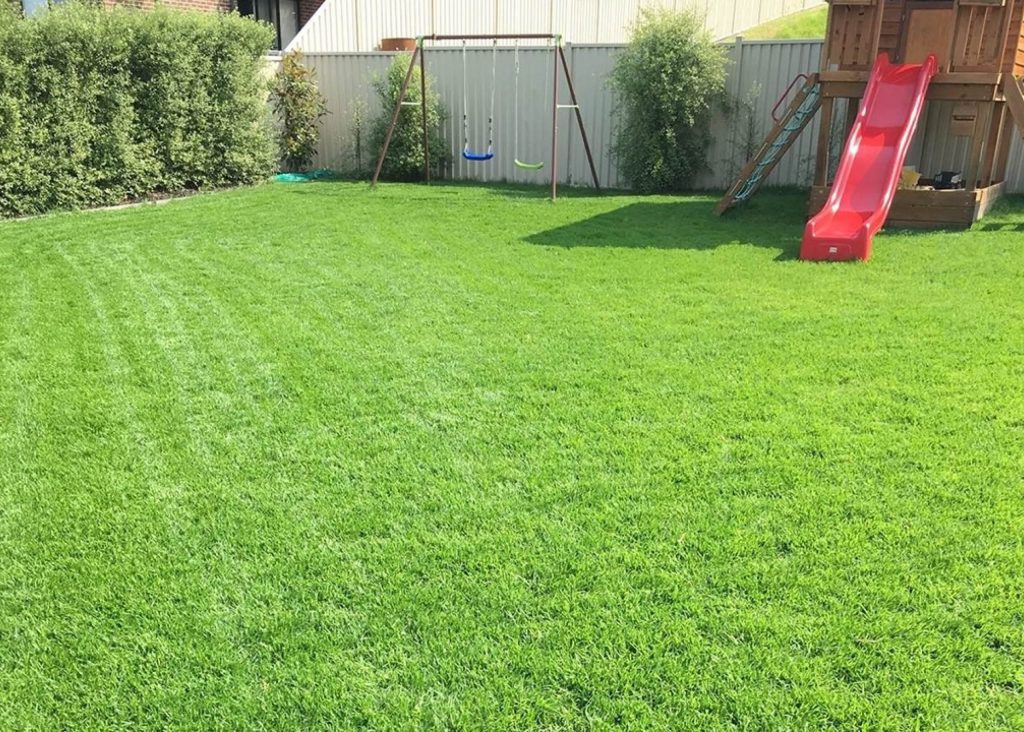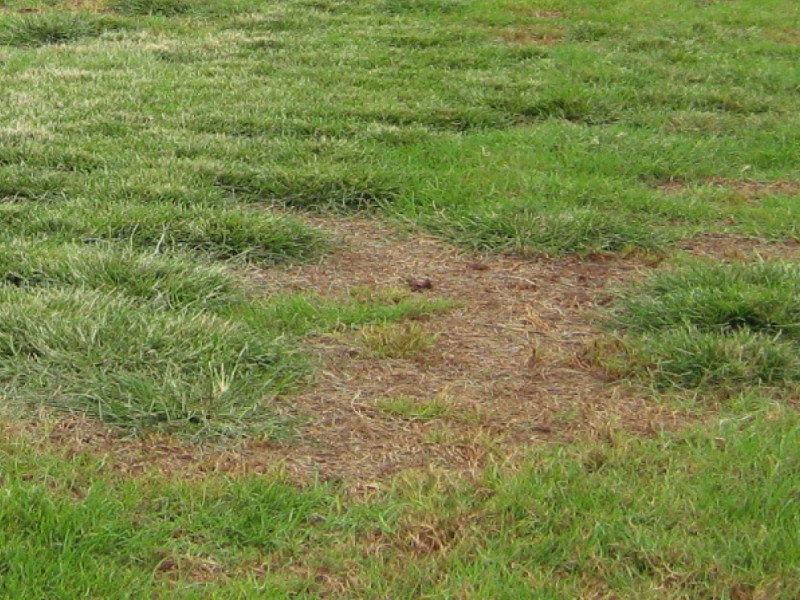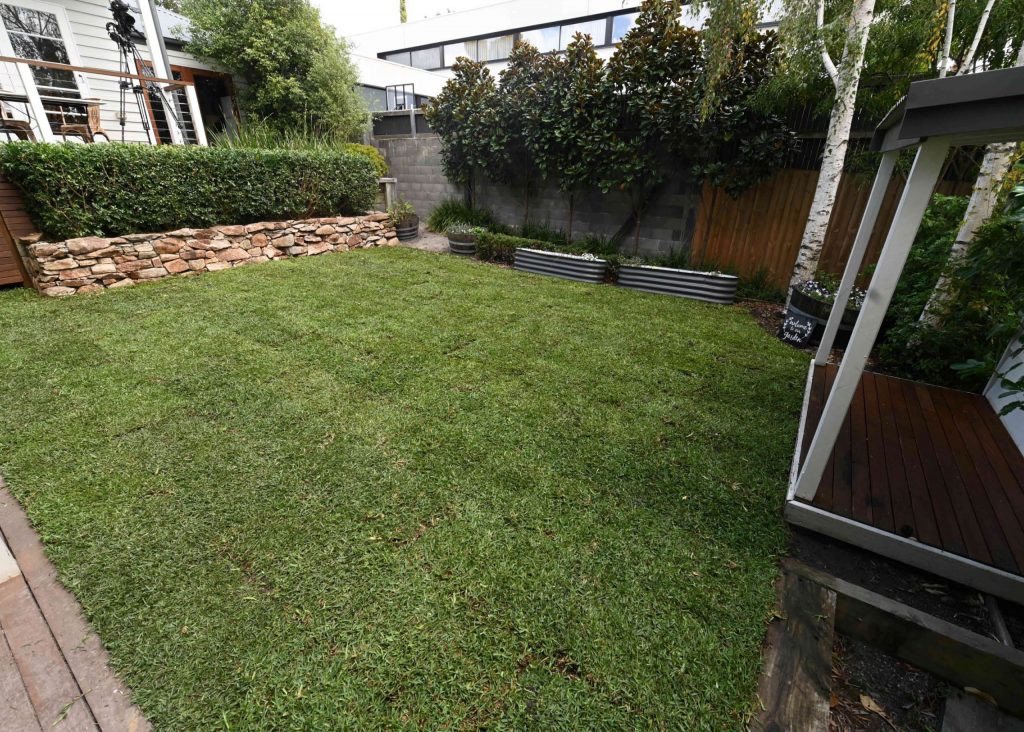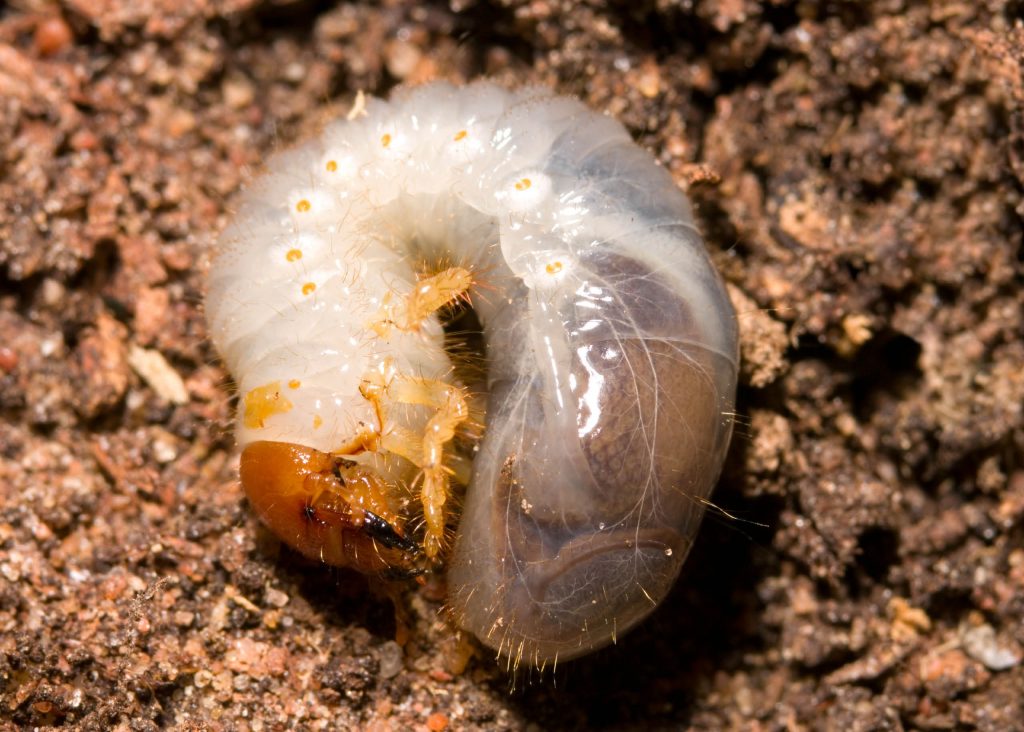Couch Grass- Your Guide
Couch grass, sometimes referred to in other markets as ‘Bermuda Grass’ and less frequently by its scientific name Cynodon dactylon, has been a staple of the Australian lawn ...

 Finding a lawn that can thrive in the harsh, yet diverse Australian climate, can be confusing. Depending on your climate and soil type, certain grasses may be better suited to your needs than others.
Finding a lawn that can thrive in the harsh, yet diverse Australian climate, can be confusing. Depending on your climate and soil type, certain grasses may be better suited to your needs than others.
If you live in an area with warm summers and mild winters, you may want to consider a Kikuyu or Buffalo lawn.
Both of these grasses are drought-tolerant and thrive in hot weather, making them ideal for dry Australian conditions.
Kikuyu vs Buffalo – which one is the perfect choice for you?
 Kikuyu grass is a vigorous, hardy grass that is known for its excellent wear tolerance and drought tolerance. With its fine, dense leaf and soft texture, this grass is also highly prized for its beautiful winter colour.
Kikuyu grass is a vigorous, hardy grass that is known for its excellent wear tolerance and drought tolerance. With its fine, dense leaf and soft texture, this grass is also highly prized for its beautiful winter colour.
Kikuyu is widely used for larger areas and for erosion control since it spreads rapidly by stems and roots. With its strong growth habits, it can easily invade and spread all over your garden, so requires maintenance to keep it looking great.
The best growing conditions for Kikuyu are fertile, light to medium textured soils with moderate drainage and salinity levels. In ideal soil conditions, Kikuyu needs a pH of 5.5-7.0, but it can tolerate pH levels as low as 4.5.
Kikuyu is a warm-season turf variety that prefers temperatures in the 15 to 25 degrees Celsius range. This makes it ideal for warmer parts of the country. During winter months, Kikuyu will become dormant, and will stop growing when exposed to frost.
Kikuyu grasses are a sun-loving variety, and as such, are not recommended for gardens that are heavily shaded. Your Kikuyu lawn will require at least 5-6 hours of sunlight each day to thrive.
If you’re looking for a drought-tolerant lawn, Kikuyu performs very well in dry conditions. Thanks to its large prostate runners, it can actively seek out soil moisture and establish itself much more quickly than other types of grass – in as little as two to three weeks.
Keeping a lush, healthy lawn will involve mowing a Kikuyu lawn regularly since it grows rapidly. Some Kikuyu varieties have prolific seed heads, which means that it requires frequent mowing to keep it looking good. New Kikuyu varieties, such as Kenda Kikuyu, are sterile, so do not spread as vigourously as standard Kikuyu grasses.
For best results, Kikuyu grass should be mowed between 30mm and 40mm in height throughout the year.
During warmer months, you will need to mow your Kikuyu lawn every 7 – 10 days. In heavily shaded areas, you should leave your grass longer, and mow to a height of 50mm-70mm.
During cooler months, you’ll only need to mow every 3 – 6 weeks.
Like all lawns, to keep your Kikuyu in top condition, you will need to water it.
Newly installed Kikuyu needs to be watered within 30 minutes of being laid. You should apply at least 20mm-30mm of water to a newly laid Kikuyu lawn, ensuring you provide enough water to soak the soil to between 70mm to 100mm.
Once the root system of your Kikuyu grass is fully established, you will only need to water when you see signs of slight leaf wilting. By not overwatering, this will cause the grass to grow deep roots to draw moisture from the soil in hot, dry conditions.
In general, when restrictions do not apply, water your Kikuyu grass every 7 – 10 days in summer and less frequently, or not at all, in cooler months.
If you want to learn more about watering, make sure to read our guide to watering a new lawn.
Kikuyu lawns are highly responsive to nitrogen, which means they will show lots of leaf growth when abundant nitrogen is applied. Hence, you should use slow-release fertilisers during the warmer months, to ensure that leaf growth doesn’t get out of control.
Aim to fertilise your Kikuyu lawn three times a year in late spring, mid to late summer and late autumn.
Due to the dense growth features of Kikuyu grass, it is quite resistant to many weeds compared to other turf varieties. However, any weeds should be removed by hand, or treated with a herbicide, to avoid spreading.
Kikuyu’s growth characteristics make it quite a hardy lawn in terms of pest resistance.
You may need to watch out for these lawn pests in your Kikuyu grass – Lawn Grub (for example, Webworm or Army Worm) and the African Black Beetle. If you see evidence of these pests, apply a suitable pesticide to your lawn.
 Kikuyu grasses are susceptible to a fungal disease called Kikuyu Yellows. Kikuyu Yellows infects the root system, causing root rot and subsequently grass death in a circular pattern.
Kikuyu grasses are susceptible to a fungal disease called Kikuyu Yellows. Kikuyu Yellows infects the root system, causing root rot and subsequently grass death in a circular pattern.
The grass at the centre of the circle dies off, leaving the area susceptible to invading weeds and other grasses. New varieties, such as Kenda Kikuyu have been bred to be resistant to this detrimental disease.
Kikuyu grass is definitely one of the hardiest lawn varieties on the market, with excellent wear tolerance and a quick recovery rate due to its large prostrate runners and vigorous rhizomes.
For kids and pets which slip and slide all over your lawn, Kikuyu grass is one of the toughest varieties to cope with high activity in your backyard.
Kenda®Kikuyu is a sun-loving variety, bred to be fast establishing, have great wear recovery, drought tolerance, and features dense fine-medium leaves with a beautiful dark green colour year-round.
Kenda Kikuyu has four times as many rhizomes as common Kikuyu so can handle all kinds of wear and tear – either from large dogs or very active kids. Even with lots of activity, it retains its good looks and remains soft underfoot.
Kenda Kikuyu is very water efficient and drought tolerant making it ideal for regions where water restrictions are imposed.
Kenda Kikuyu was bred to be predominantly sterile and produce minimal seed head, reducing its chances of invading surrounding garden beds and paths. With minimal seed head, Kenda Kikuyu is also an ideal lawn choice for allergy sufferers.
Where it grows: Kenda Kikuyu grows well in southern Queensland, New South Wales, ACT, Victoria, South Australia and Western Australia.
Expect to pay: Between $9 and $16 per square metre.
 Buffalo Grass is a versatile lawn for Australian conditions. It is a beautiful, low-maintenance grass that is perfect for homeowners who want a luscious, deep green aesthetic. This warm season grass has a vibrant, green color and a thick growth habit that helps it to outcompete weeds. Buffalo grass is also very water efficient, making it a great choice for drought-prone areas. Buffalo grass is tolerant to many climatic extremes and maintains its colour well into winter. Buffalo varieties have been bred to feel soft and luxurious underfoot, making them a popular choice among homeowners.
Buffalo Grass is a versatile lawn for Australian conditions. It is a beautiful, low-maintenance grass that is perfect for homeowners who want a luscious, deep green aesthetic. This warm season grass has a vibrant, green color and a thick growth habit that helps it to outcompete weeds. Buffalo grass is also very water efficient, making it a great choice for drought-prone areas. Buffalo grass is tolerant to many climatic extremes and maintains its colour well into winter. Buffalo varieties have been bred to feel soft and luxurious underfoot, making them a popular choice among homeowners.
Known for their exceptional shade tolerance, Buffalo varieties can survive on as little as 3-4 hours of sunshine each day. Sapphire Buffalo is one of the most shade tolerant varieties on the market, tolerating up to 70% shade in dry conditions.
A Buffalo grass plant thrives in full sun and has a deep root system that allows it to reach deep into the ground for moisture. This makes it a good choice for drier climates because it is a water-efficient plant.
Buffalo turf also has a good recovery from water stress thanks to its fast growth habit, which means it will stay greener for longer through the summer months.
Buffalo grass is a popular variety, as it requires little maintenance, but looks great year-round.
Mowing
To maintain a healthy lawn, you should mow your Buffalo lawn at 25mm-50mm in full sun and increase to 50mm-70mm in shaded areas.
Watering
Frequent and shallow watering is recommended once your lawn is established. The deep roots of Buffalo grass mean it can draw moisture from the soil, helping it survive during dry, hot conditions.
Fertiliser
You should add a slow-release fertiliser on your Buffalo lawn once a month after installation – this will keep your Buffalo grass strong and healthy. Once your Buffalo grass is fully established, apply fertiliser during April and early September. Avoid over-fertilising in summer.
 Pests and Disease
Pests and Disease
Buffalo is terrific at outcompeting weeds, especially if it is kept healthy. Weeds should be monitored, and treated with a herbicide that is suitable for Buffalo grass. You should also keep an eye out for Lawn Grubs and African Black Beetles.
Because Buffalo grasses are very resilient, they are ideal for yards with children or pets, as they quickly recover from wear and tear.
One of the most popular Buffalo varieties in eastern Australia, Prestige Buffalo is known for its consistent deep green colour, hard wearing, good recovery and drought tolerance. For sun and shade tolerance, Prestige Buffalo will tolerate up to 70% shade with low wear, and up to 50% shade with moderate to high wear.
Where it grows: Prestige turf can be grown from Queensland to Victoria and in Western Australia.
Expect to pay: $13 and $20 per square metre.
If you’re looking for a soft-feel Buffalo grass with high shade tolerance, Sapphire Buffalo is your best choice. Independent research has found that Sapphire Soft Leaf Buffalo, in 70% shade cover, maintains quality and growth and outperforms other Buffalo varieties. Featuring a deep green colour that is maintained through winter, Sapphire is a water efficient, low maintenance lawn variety.
Where it grows: Sapphire Buffalo can be grown in Queensland, New South Wales, Victoria, South Australia and Tasmania.
Expect to pay: $12 and $20 per square metre.
The biggest selling Buffalo in the World, Palmetto offers low maintenance, less watering and is a great hard-wearing option family with kids and pets. Palmetto’s dense growth means it is harder for weeds to invade the lawn.
Where it grows: Palmetto Buffalo can be grown in Queensland, New South Wales, Victoria, South Australia and Tasmania.
Expect to pay: $12 and $20 per square metre.
Both Kikuyu and Buffalo are great choices for the Australian way of life. But which one should you choose?
While both Kikuyu and Buffalo are hardwearing grasses that have good drought resistance and wear tolerance, Buffalo stands out for its versatility, and low maintenance. Naturally resistant to weeds, diseases, and pests, Buffalo means that you won’t have to sacrifice your weekends just to maintain the lawn. Unlike Kikuyu, it is non-invasive, and grows at a slower rate than Kikuyu, so it will require less mowing through the summer.
If you have a need for shade tolerant grass, Kikuyu is not for you. Unable to thrive on fewer than 5-6 hours of sunlight per day, it simply is not up to the job. Buffalo, however, has a very high shade tolerance, and will continue to look great in up to 70% shade.
At $9-$16 per square metre, Kenda Kikuyu may be appealing to the budget conscious. At a slightly higher price point of $12-$20 per square metre, Buffalo is a bit more expensive, but the time saved with this low maintenance lawn is probably worth it in the long term.
If you’re looking for a lawn that can withstand the rigours of family life with pets and children, both Buffalo and Kikuyu are dependable choices. Both bred to endure the heat of the Australian climate, and are hardy, wear tolerant varieties that require little watering. But if you value your time, and don’t want to be spending your weekends pushing a lawnmower, Buffalo grass is a versatile and low-maintenance option that is well-suited for a variety of climate and soil conditions, making it the perfect choice for your backyard.
To get the best advice on the right grass selection for your home, speak to your local turf farmer of supplier, who will be familiar with the conditions in your local area. Use Find a Turf Supplier to locate a supplier in your area.
To view our full range of turf varieties, check out our Find Your Turf page.